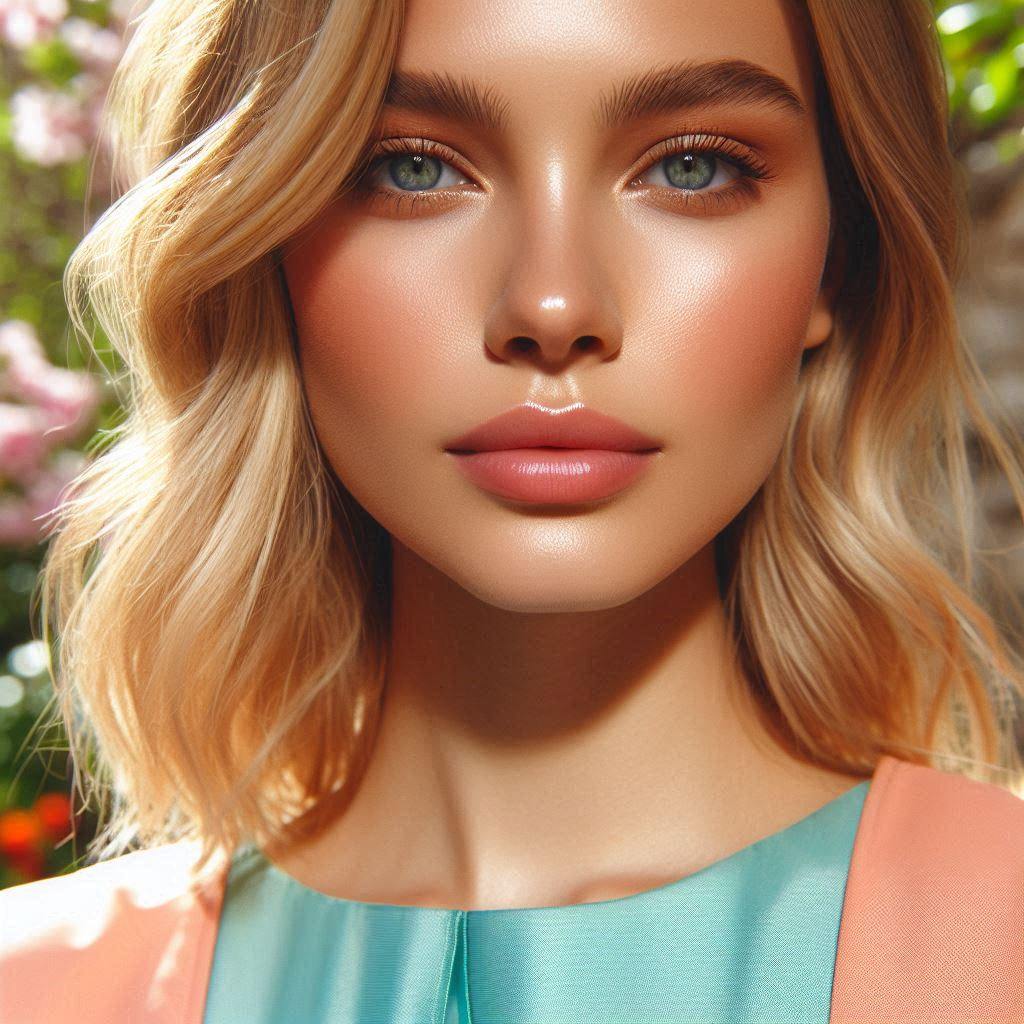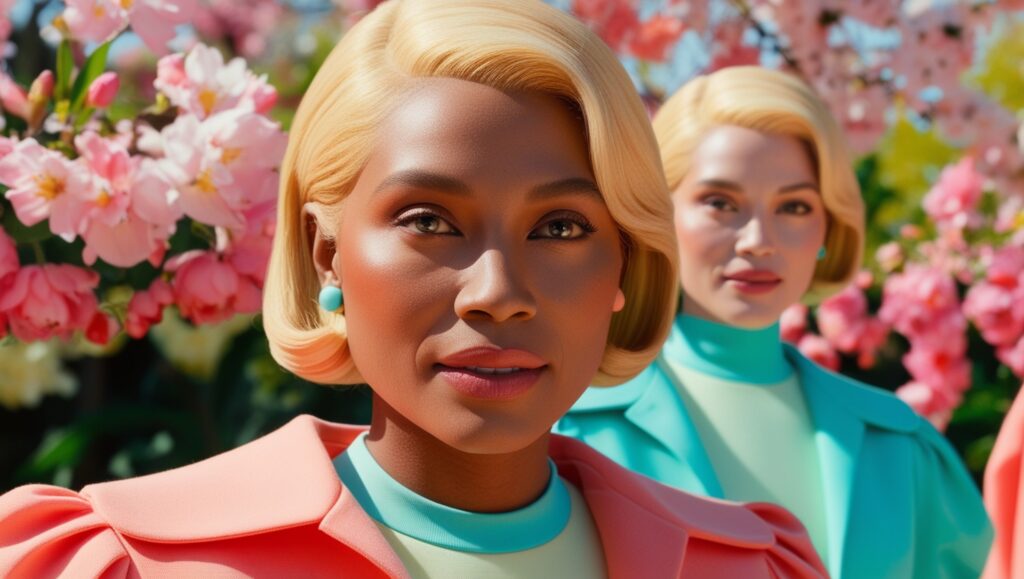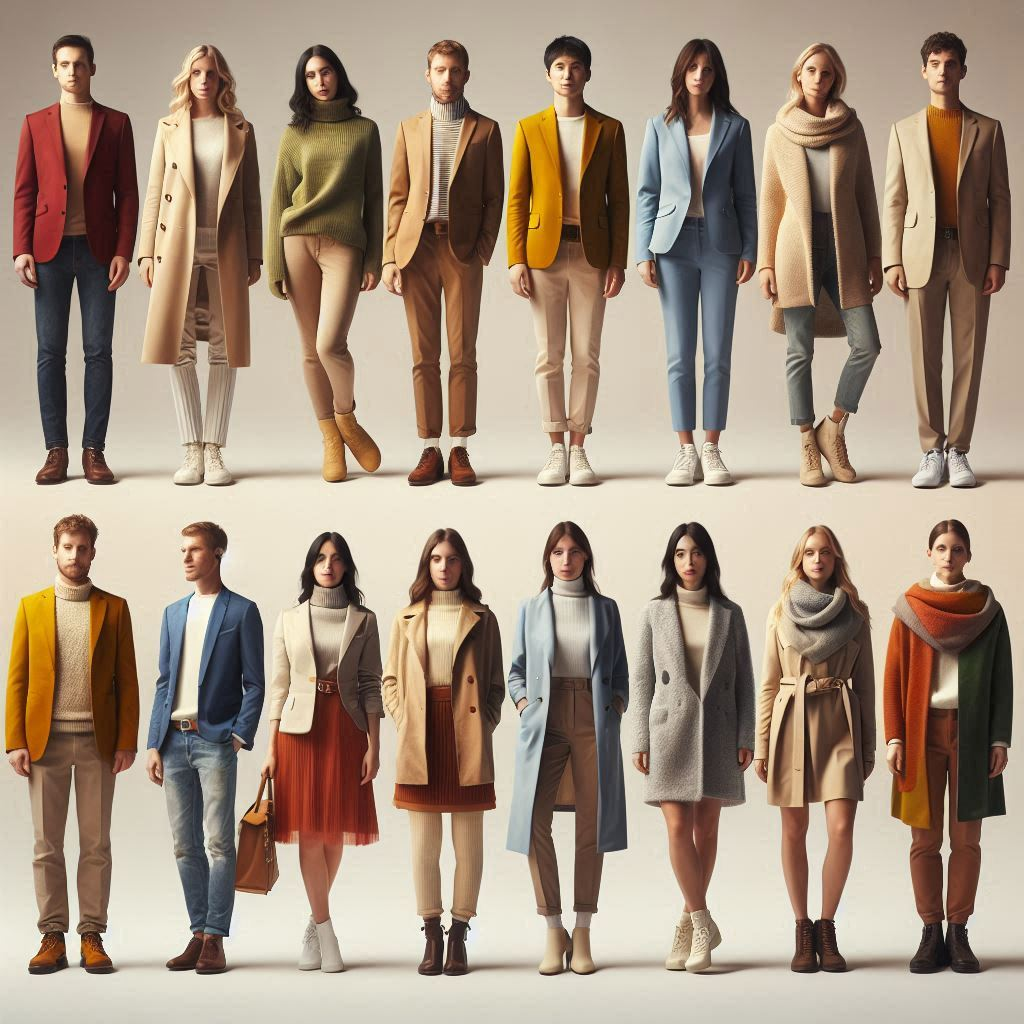Color is more than just a visual experience; it’s a language that communicates emotion, personality, and style. Understanding how colors interact with your skin tone, hair color, and personal style can transform the way you present yourself to the world. This comprehensive guide to color analysis will help you unlock the secrets of choosing the right colors to enhance your natural beauty and boost your confidence.

What is Color Analysis?
Color analysis is the process of determining the colors that best complement an individual’s natural coloring. This practice, also known as seasonal color analysis, involves analyzing your skin tone, hair color, and eye color to categorize you into one of the four seasons: Spring, Summer, Autumn, or Winter. Each season has its own palette of colors that are designed to harmonize with your natural features.
The concept of color analysis first gained popularity in the 1980s with the publication of Carole Jackson’s book Color Me Beautiful. Since then, the practice has evolved, and more nuanced systems have been developed to accommodate the diversity of human coloring.
The Science Behind Color Analysis
Color analysis is rooted in color theory, which is the study of how colors interact with one another. This theory is used in art, design, and fashion to create visually appealing combinations. In the context of personal styling, color theory helps determine which colors will enhance your natural appearance rather than overpower it.
The key components of color theory include:
- Hue: The basic color itself (e.g., red, blue, yellow).
- Value: The lightness or darkness of a color.
- Saturation: The intensity or purity of a color.
Color analysis considers these components to determine which colors will harmonize with your natural coloring.
The Four Seasons of Color Analysis
The traditional approach to color analysis divides people into four seasonal categories: Spring, Summer, Autumn, and Winter. Each season corresponds to a specific set of colors that work best with the natural tones of those in that category.
- Spring:
- Characteristics: Warm undertones, light to medium skin, golden or strawberry blonde hair, light eyes (blue, green, or light hazel).
- Color Palette: Light, warm, and fresh colors such as peach, coral, golden yellow, and turquoise. Avoid harsh or muted colors.
- Fashion Tips: Embrace lively and warm colors that reflect the vibrancy of spring. Soft pastels, light neutrals, and bright, clear colors will complement your complexion.
- Summer:
- Characteristics: Cool undertones, light to medium skin, ash blonde or brown hair, blue or gray eyes.
- Color Palette: Soft, cool, and muted colors like lavender, soft pink, powder blue, and mint green. Avoid overly warm or bright colors.
- Fashion Tips: Opt for soft and cool tones that evoke the calmness of summer. Light pastels, cool neutrals, and dusty shades will harmonize with your natural coloring.

- Autumn:
- Characteristics: Warm undertones, medium to dark skin, red or brown hair, brown or green eyes.
- Color Palette: Rich, warm, and earthy colors such as olive green, burnt orange, mustard yellow, and chocolate brown. Avoid cool, icy tones.
- Fashion Tips: Embrace the warm, rich colors of autumn. Deep, earthy tones, warm neutrals, and vibrant fall hues will enhance your natural beauty.
- Winter:
- Characteristics: Cool undertones, light to dark skin, black or dark brown hair, deep brown or blue eyes.
- Color Palette: Bold, cool, and dramatic colors like black, navy blue, emerald green, and crimson red. Avoid warm, muted tones.
- Fashion Tips: Go for bold and cool colors that reflect the stark beauty of winter. Bright jewel tones, crisp whites, and dark, dramatic shades will make you stand out.
Extended Color Analysis Systems
While the traditional four-season color analysis is still widely used, many experts have developed extended systems to account for the wide range of human coloring. These systems often divide the four seasons into subcategories, resulting in 12 or 16 different types.
For example:
- Light Spring: A softer, more pastel version of the Spring palette.
- Deep Winter: A richer, more intense version of the Winter palette.
These extended systems allow for a more personalized approach to color analysis, ensuring that everyone can find their perfect palette.
How to Determine Your Color Season
Figuring out your color season requires a careful assessment of your natural coloring. Here’s a step-by-step guide to help you determine your season:
- Determine Your Skin Undertone:
- Warm Undertones: Your skin has a yellow, golden, or peachy hue. Veins on your wrist appear greenish, and gold jewelry complements your skin better than silver.
- Cool Undertones: Your skin has a pink, red, or bluish hue. Veins on your wrist appear blue or purple, and silver jewelry looks better on you than gold.
- Neutral Undertones: Your skin doesn’t lean strongly towards warm or cool. You might find that both gold and silver jewelry suit you.
- Assess Your Hair Color:
- Warm Hair Colors: Golden blonde, auburn, chestnut, and rich brown.
- Cool Hair Colors: Ash blonde, platinum, black, and cool brown.
- Examine Your Eye Color:
- Warm Eye Colors: Amber, golden brown, warm hazel, green.
- Cool Eye Colors: Blue, gray, deep brown, cool hazel.
- Compare with Seasonal Palettes:
- Once you have a clear understanding of your undertones, hair color, and eye color, compare these with the characteristics of the four seasons. This comparison will help you determine which season’s palette suits you best.
The Benefits of Color Analysis
Understanding your color season can have a profound impact on various aspects of your life:
- Enhanced Appearance: Wearing colors that complement your natural tones will make your skin look healthier, your eyes brighter, and your overall appearance more vibrant.
- Increased Confidence: Knowing you look your best can boost your self-esteem and make you feel more confident in social and professional situations.
- Streamlined Wardrobe: With a clear understanding of your best colors, you can build a cohesive wardrobe where everything matches, making it easier to put together outfits.
- Efficient Shopping: Color analysis helps you make smarter shopping decisions, allowing you to focus on purchasing clothes and accessories that will enhance your appearance.
- Personal Branding: For those in the public eye or working in creative fields, color analysis can be a valuable tool for developing a personal brand that resonates with your audience.
How to Apply Color Analysis in Your Daily Life
Now that you understand the basics of color analysis, here are some practical tips for incorporating it into your daily life:
- Wardrobe Audit: Go through your closet and identify which clothes align with your seasonal palette. Consider donating or repurposing items that don’t match your best colors.
- Shopping with Purpose: When shopping for new clothes, keep your color season in mind. Focus on buying pieces that will harmonize with the rest of your wardrobe and enhance your natural beauty.
- Makeup Choices: Choose makeup shades that align with your color palette. For example, if you’re a Winter, opt for cool-toned eyeshadows, lipsticks, and blushes.
- Hair Color: If you’re considering changing your hair color, choose a shade that complements your natural undertones. A good colorist can help you find the perfect match.
- Accessorizing: Accessories like scarves, hats, and jewelry can also be chosen based on your color season. These items can add a pop of your best colors to any outfit.
Beyond the Seasons: Modern Trends in Color Analysis
As fashion evolves, so does the practice of color analysis. Modern trends are moving towards a more inclusive and flexible approach, recognizing that traditional seasonal categories may not fully capture the diversity of human coloring.
- Personalized Palettes: Some experts now create custom color palettes for clients, taking into account not just their natural coloring, but also their personality, lifestyle, and fashion preferences.
- Color Psychology: Beyond just appearance, color psychology explores how different colors can affect mood, behavior, and perceptions. Incorporating this into color analysis can help individuals choose colors that not only enhance their appearance but also align with their emotional and psychological needs.
- Digital Tools: With the advent of technology, there are now apps and online tools that can help you determine your color season. These tools use algorithms to analyze your features and suggest the best color palette for you.
- Sustainability: In the age of fast fashion, color analysis can be a tool for promoting sustainability. By helping people make thoughtful choices about what they wear, color analysis can reduce waste and encourage the purchase of timeless, versatile pieces.
Conclusion: Embrace the Power of Color
Color analysis is a powerful tool that can transform the way you see yourself and the way others see you. By understanding the colors that complement your natural beauty, you can enhance your appearance, boost your confidence, and make more informed choices about your wardrobe and personal style.
Whether you follow the traditional seasonal approach or explore more modern, personalized methods, the key is to use color as a way to express your unique identity. Remember, the goal of color analysis isn’t to limit your choices but to empower you to make decisions that reflect your true self.
So, go ahead—embrace the power of color and let it guide you towards a more confident, stylish, and authentic you.

FAQs
Q1: What is color analysis?
- A1: Color analysis is the process of determining which colors best complement your natural features, such as skin tone, hair color, and eye color. It helps you identify a color palette that enhances your appearance and boosts your confidence.
Q2: How do I determine my color season?
- A2: To determine your color season, you need to assess your skin undertone (warm, cool, or neutral), hair color, and eye color. These factors help categorize you into one of the four seasons: Spring, Summer, Autumn, or Winter, each with its unique color palette.
Q3: What are the benefits of color analysis?
- A3: The benefits of color analysis include enhanced appearance, increased confidence, a streamlined wardrobe, efficient shopping, and the ability to develop a personal brand that resonates with your audience.
Q4: Can color analysis help with makeup choices?
- A4: Yes, color analysis can guide you in choosing makeup shades that align with your color season, ensuring that your makeup complements your natural features and overall look.
Q5: Is color analysis only for women?
- A5: No, color analysis is for everyone. Men and women alike can benefit from understanding which colors enhance their natural features and align with their personal style.
Q6: How has color analysis evolved over time?
- A6: Color analysis has evolved from a simple four-season system to more personalized and inclusive approaches. Modern trends include custom palettes, color psychology, digital tools, and a focus on sustainability.
Q7: Can I do color analysis online?
- A7: Yes, there are digital tools and apps available that can help you determine your color season. These tools use algorithms to analyze your features and suggest the best color palette for you.
Q8: What should I do if I don’t fit perfectly into one season?
- A8: It’s common not to fit perfectly into one season. Extended color analysis systems offer more subcategories, or you can work with a color consultant to create a custom palette that suits your unique features.
Q9: Can color analysis affect my wardrobe choices?
- A9: Absolutely. Knowing your color season can help you build a cohesive wardrobe where all pieces harmonize with your natural coloring, making it easier to put together outfits that enhance your appearance.
Q10: What if I want to wear colors outside of my season?
- A10: While it’s recommended to stick to your season’s palette, you can still wear other colors by choosing variations that work better with your features or using them as accents rather than the main color.
